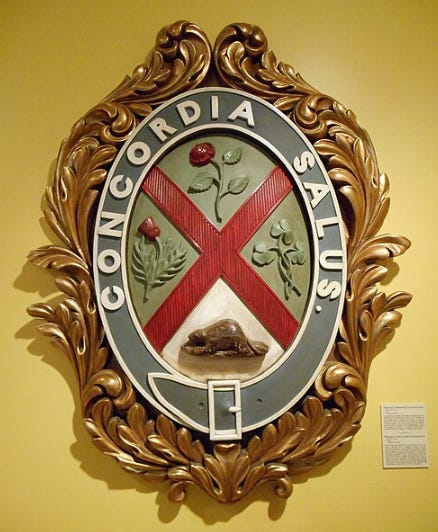Benjamin Franklin once said that America is “a republic, if you can keep it.” I’m not American, but I’ve always admired that quote. It’s a warning and a challenge in one sentence. A reminder that a country’s values are only as strong as its citizens’ commitment to them.
Next week, Canadians celebrate Canada Day. Over the last six months, many of us have been reflecting on what it means to be Canadian. And like it or not, that reflection often leads us to compare ourselves to other countries, especially our neighbour to the south. America commands a lot of attention. Even their birthday overshadows ours, just a few days later. It certainly fosters a tinge of insecurity. We look at the symbols and stories of older nations with a mix of awe and envy. The eagle. The lion. The revolution. It’s the kind of stuff prestige TV is made of.
But we need to remember our symbols carry weight too.
Our American and British cousins often tease us for picking the beaver as our national emblem. But in this country, we like to say the beaver is wise. It’s not loud or flashy. It’s not particularly graceful or majestic. But it builds. It takes what is in front of it like water, mud, and sticks and shapes it into something useful. Without fuss. Without fanfare. Just getting the job done.
That instinct has been part of this land for a long time. In many First Nations cultures, the beaver symbolizes wisdom because it doesn’t try to control everything. It adapts. It shapes its environment without conquering it. It works steadily, using what it needs, leaving the rest. It creates conditions where others can thrive. That’s a lesson we would do well to remember.
Over time, the beaver’s meaning for Canada shifted. It became more than a symbol. It became a resource. Fur traders arrived, drawn by the value of its underfur, perfect for felt hats. That market built an economy. That economy helped build a country. Canoe routes were carved. Trading forts rose. Wealth was extracted. Treaties were signed and then broken or ignored. The Hudson’s Bay Company became one of the most powerful commercial forces in the world. And it all rested on the back of a semi-aquatic rodent.
Even during this period of economic expansion and colonial ambition, there were competing ideas about what kind of country we could become. One of the most enduring came from Samuel de Champlain, the founder of New France and a central figure in the early history of what is now Canada. Champlain understood that this land would not be held by force alone. Trade was essential. So was diplomacy. But he also carried a larger idea. As David Hackett Fischer writes in Champlain’s Dream, Champlain envisioned “…a New World where people lived at peace with others unlike themselves.” That vision was never fully realized. But it left a mark. An idea. That we could build something together without erasing one another in the process.
The story of this country has always been, in part, the story of trying to hold things together. Different peoples. Different languages. Different histories. It hasn’t been easy. It still isn’t. But the effort matters. The belief that building together is better than breaking apart still holds. Canada’s not perfect. But it’s ours.
The beaver appeared on Montreal’s coat of arms in 1833, alongside the rose, thistle and shamrock. It represented the French settlers. But it also represented the labour of building something in this place. It was a nod to hard work, not heroism.

The Royal Canadian Engineers carried the beaver as their symbol during the Second World War not because it was cute but because it got the job done. Canadian engineers built bridges, roads, and airstrips across Europe often under enemy fire. They shaped the landscape so others could move forward. Under pressure and against odds. With purpose.
That part of the beaver story still feels relevant. It doesn’t roar. It doesn’t fly. It’s not majestic. It’s not an apex predator. It survives in hard places. It adapts. It keeps going.
If Canada has a national temperament, that might be it. Quiet resolve. Incremental progress. Showing up, even when it’s inconvenient. Especially when it’s inconvenient.

This country is not flashy. It’s not always fair. It’s definitely not perfect. But it’s still building. Cities. Policies. Institutions. Relationships. We often don’t get it right. But we keep trying.
The beaver is still there, on our coins, our crests, and our patches. Not because of what it once symbolized, but because of what it continues to represent in the way we live and govern today. That we are all, in our own way, trying to shape something lasting. Not for glory. Just to leave something standing that we can be proud of.
We’ve built something special here. A country shaped by determination, cooperation, and hard work. It didn’t come together easily. It won’t stay together automatically.
Confederation, if we can keep it.
Happy Canada Day.



